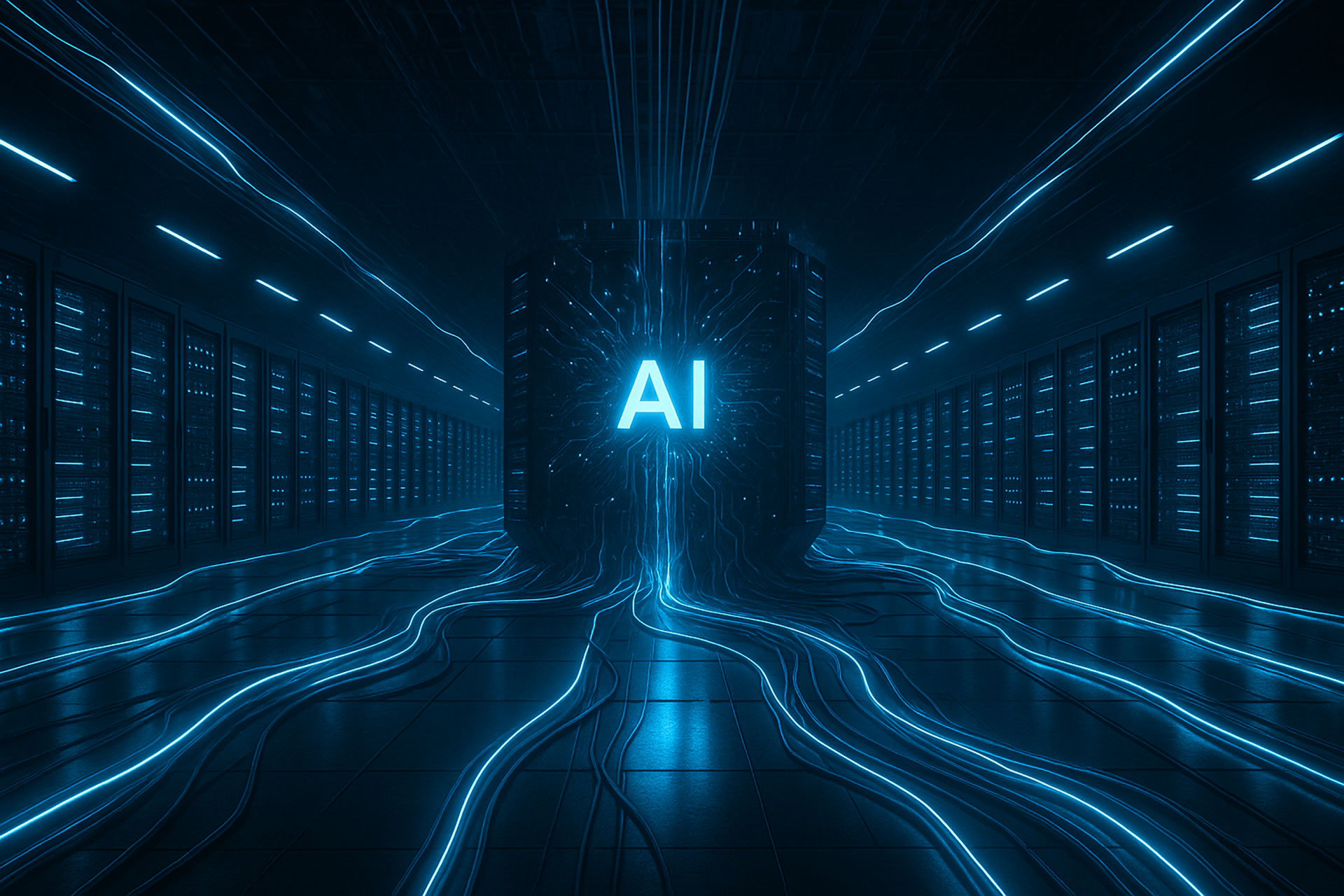Where AI Finds Its Strength, Inside a Datacenter Like No Other
Artificial intelligence is no longer something that exists only in research labs or science fiction. The hunger for faster, larger, and more capable AI systems has pushed the limits of what traditional datacenters can deliver. Meeting that demand requires an entirely new kind of facility, purpose-built “AI factories” designed from the ground up for training and running massive AI models.
This year marked a milestone in that transformation with the opening of Fairwater, a new AI datacenter in Wisconsin. More than just another addition to the cloud, it represents one of the most advanced supercomputing facilities ever constructed.
What Makes an AI Datacenter Different?
A conventional datacenter hosts everything from email services to business applications. These workloads are often small and isolated, each running independently across many servers. An AI datacenter flips that model on its head. Instead of breaking workloads apart, it ties hundreds of thousands of powerful GPUs into one massive computing cluster.
Think of it as building a stadium-sized orchestra. Every musician (or GPU) must stay perfectly in tune and on tempo, or the entire performance collapses. The networking fabric, storage systems, and cooling mechanisms are all designed to keep those instruments playing in harmony at extraordinary speeds.
Fairwater, An AI Factory in Wisconsin
Fairwater sprawls across 315 acres and houses three enormous buildings, together offering more than a million square feet of space. Its construction required staggering amounts of steel, cable, and foundation piles, almost a city within itself.
But size isn’t the only story here. Inside, thousands of NVIDIA’s most advanced GPUs are interconnected in a way that allows them to behave as one gigantic accelerator. The result? Training speeds that eclipse even the world’s fastest existing supercomputers. Fairwater can process tokens, the building blocks of AI learning, at a rate that pushes the boundaries of what’s technically possible today.
How Training Works at Scale
AI training is essentially repetition at astronomical levels. The system takes small chunks of data, predicts the next step, checks its accuracy, and adjusts. This cycle repeats trillions of times. If GPUs are the players, the data tokens are the practice drills, and the networking fabric is the coaching staff keeping everyone synchronized.
To avoid bottlenecks, everything, from storage access to inter-GPU communication, must run at blistering speeds.
Fairwater’s racks are engineered to collapse the barriers between memory and compute, allowing GPUs to share workloads instantly and efficiently.
Networking Without Bottlenecks
At the heart of AI training is communication. Each GPU needs to “talk” to every other GPU without lag. Microsoft’s engineers achieved this by using a mix of NVLink, NVSwitch, InfiniBand, and Ethernet fabrics, all arranged in a non-blocking “fat tree” topology.
This design ensures that whether GPUs are neighbors in the same rack or separated by an entire row, they can exchange information at full speed without congestion.
To further reduce latency, racks are stacked in a two-story configuration, allowing vertical as well as horizontal connectivity.
Cooling with Sustainability in Mind
Packing this much computing power into one site generates enormous heat. Traditional air cooling simply can’t keep up. Instead, Fairwater uses a closed-loop liquid cooling system, one of the largest of its kind in the world.
Water circulates through the servers to absorb heat, then moves out to giant cooling fins where massive fans recirculate it back inside. Because it’s a closed loop, the system doesn’t waste water, it only needs to be filled once.
Over 90% of the facility runs on this approach, dramatically reducing the environmental footprint compared to conventional methods.
Storage on a Colossal Scale
AI training consumes data at a pace that would overwhelm ordinary storage. To handle this, Fairwater’s storage systems stretch the length of multiple football fields. Azure’s storage platform has been reimagined to support millions of transactions per second, providing uninterrupted access to exabytes of information.
Key innovations like BlobFuse2 make it possible for GPUs to pull training data locally without ever idling, while automatic scaling ensures resources grow as demand increases.
In short, the system is built to guarantee that data is never the bottleneck.
A Global Web of AI Factories
Packing this much computing power into one site generates enormous heat. Traditional air cooling simply can’t keep up. Fairwater takes a different route with a closed-loop liquid cooling system, one of the largest of its kind in the world.
Here’s how it works:
- Water circulates directly through the servers, pulling heat away.
- The warmed water flows out to massive cooling fins.
- Large fans push air across the fins, bringing temperatures back down.
- The cooled water returns into the system, ready to cycle again.
Because it’s a closed loop, the system doesn’t waste water and only needs to be filled once. More than 90% of the facility relies on this method, cutting its environmental footprint far below conventional approaches.
Looking Ahead
Building Fairwater required rethinking every layer of the stack, from silicon and servers to networking and cooling. It signals the arrival of a new era in datacenter design, one defined by AI at its core.
As these AI factories spread across the globe, they promise not only raw computing power but also a new model of interconnected intelligence. The Wisconsin site is just the beginning of this transformation, laying the foundation for the world’s most advanced AI systems to emerge.
Source:
https://blogs.microsoft.com/blog/2025/09/18/inside-the-worlds-most-powerful-ai-datacenter/




Leave a comment